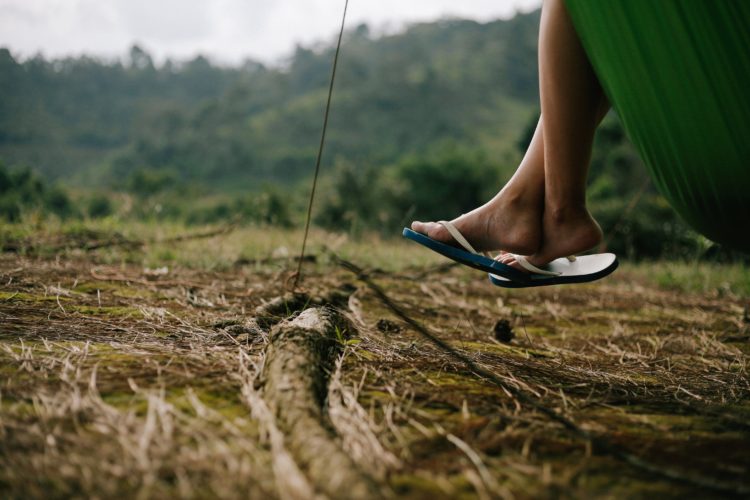
Warm weather, sunglasses, good old-fashioned BBQ’s, and the familiar sound of flip-flops. Sounds like Summer!
Flip-flops are great to slip into but are not necessarily the best choice for footwear. The flip-flop style sandal offers no support, and only two simple straps hold the foot in place. Wearing flip-flops during extended periods of walking can cause serious foot, hip, knee, and back injuries.
“When we use flip-flops as everyday footwear, the result is overworked tendons and an overstressed arch,” says Dr. Anthony Hinz, an orthopedic surgeon at The Center specializing in foot and ankle conditions. “Over time, these minor injuries can turn into major injuries like ankle sprains, tendonitis, and plantar fasciitis.”
Flip-flops often alter the way we walk, causing shorter strides and curled toes. Over time, positioning your feet differently while walking can lead to joint problems in your knees, hips, and back.
If you already suffer from a condition such as diabetes, arthritis, back pain, or any other conditions that cause pain while walking, it might be time to ditch the flip-flops for good. Otherwise, you don’t necessarily have to get rid of this comfortable and convenient footwear altogether.
Here are some tips on how to wear your flip-flops while still protecting your feet:
- Choose the right shoes for the right activities. If you’re walking on the beach or heading over to the local pool, flip-flops are probably a safe choice. With their lack of support, flip flops are not designed for long walks or continuous use. Choose a footwear option with more support for shopping, long walks or hikes, or places like theme parks where you’ll be on your feet for long periods.
- Shoes help to protect your feet from injury, so don’t choose flip-flops for places where you may suffer cuts, pick up bacteria, or otherwise injure your feet. Examples include doing yard work or hiking on uneven terrain.
- Don’t run or play sports in flip-flops. This can lead to ankle sprains, fractures, and ligament injuries due to the lack of support.
- Listen to your body. If you start to experience back pain after walking around in flip-flops all day, it’s a good choice to change into something with more support. The longer you keep going after the pain is present, the more your body is compensating for the injured area by putting stress on other muscles and joints.
- Choose the right flip-flops. Plastic flip-flops seem to come in every color under the sun, but a high-quality pair of leather flip-flops is less likely to cause irritation like blisters. Replace your flip-flops every three to four months to avoid wearing a worn out pair.





